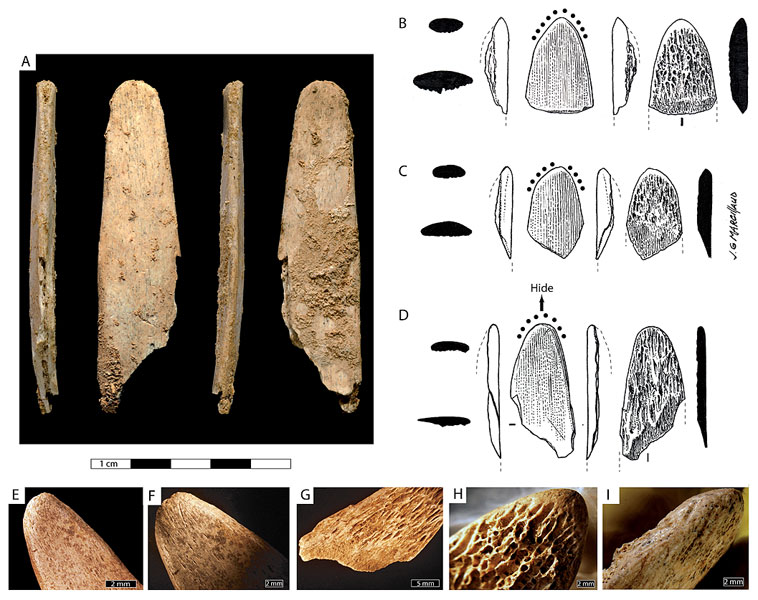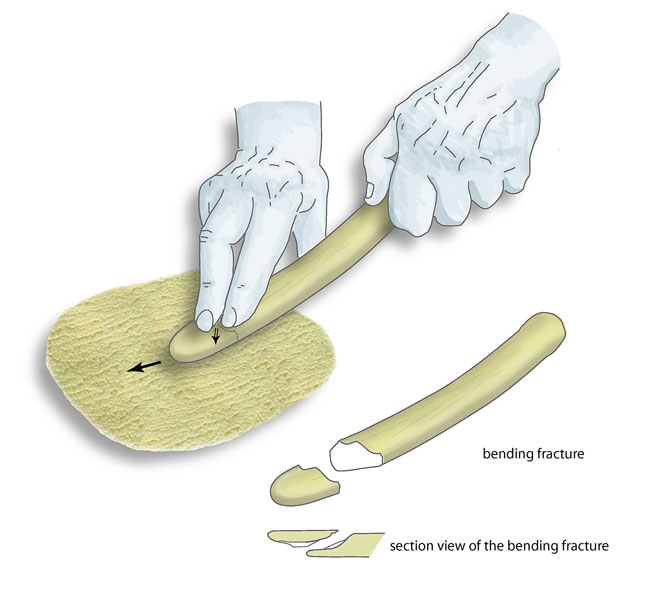A bone fragment from a French archaeological site has turned out to be a part of an early specialized bone tool used by a Neanderthal before the first modern humans appeared in Europe.
The bone tools were found in deposits containing typical Neandertal stone tools and the bones of hunted animals including reindeer, red deer and bison. Three of the four pieces were from the site of Abri Peyrony, France. The animal bones from that site had been exported to UC Davis for analysis.
Used to smooth tough animal hides, the tools were made about 50,000 years ago by Neanderthals -- not just the humans who came after them, as researchers had earlier hypothesized. The specialized tools are still used today, in similar form, to smooth and refine leather made into high-end purses and jackets. 
From deer rib to tool. Credit: UC Davis.
"At the time, I had no idea about the impact of my discovery," said Naomi Martisius, who is now pursuing her doctoral degree in anthropology at UC Davis and found a peculiar piece while sorting through bone fragments.
"Previously these types of bone tools have only been associated with modern humans," said Teresa E. Steele, associate professor of anthropology at UC Davis, who also served as a co-author on the article and adviser to Martisius at UC Davis and at archaeological excavations in France. "However, our identification of these pieces in secure Neandertal contexts leaves open the possibility that we have found, for the first time, evidence that Neandertals may have influenced the technology of modern humans," she said.

A reconstruction shows how lissoirs, made of deer ribs, could have been used to prepare hides to make them more supple, lustrous and impermeable. Credit: UC Davis
Using modern imaging techniques, they will examine the pieces made by the Neandertals, comparing those with the ones first made by the first modern humans in Europe and the ones they will manufacture at UC Davis. They will also look at animal bones from nearby sites to see if she can identify additional pieces made by Neanderthals.
The tools described in their current work were recovered in archaeological sites in the French countryside that had been explored for more than 100 years, but modern archaeological techniques enabled researchers to recognize these smaller pieces now identified as pieces of once-sophisticated tools, Steele said.
Citation: Marie Soressi, Shannon P. McPherron, Michel Lenoir, Tamara Dogandžić, Paul Goldberg, Zenobia Jacobs, Yolaine Maigrot, Naomi L. Martisius, Christopher E. Miller, William Rendu, Michael Richards, Matthew M. Skinner, Teresa E. Steele, Sahra Talamo, and Jean-Pierre Texier
Neandertals made the first specialized bone tools in Europe PNAS 2013 110 (35) 14186-14190; August 12, 2013, doi:10.1073/pnas.1302730110





Comments